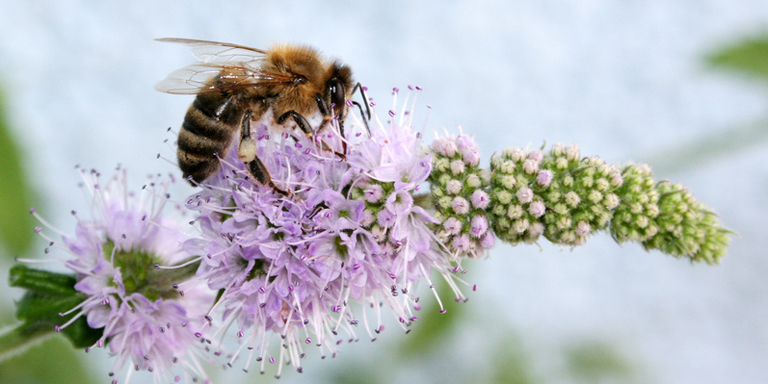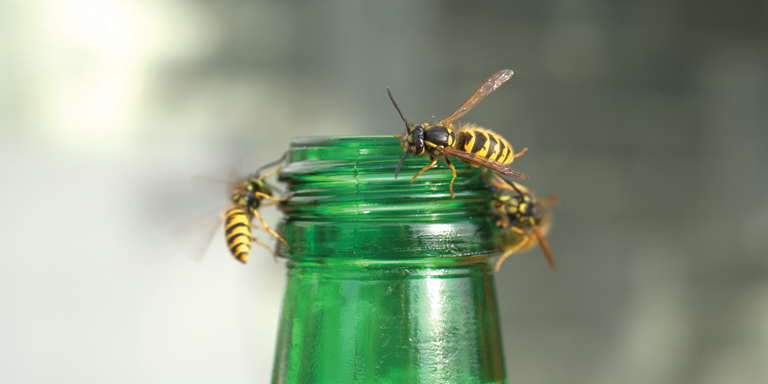Bee venom allergy
Bee stings mainly happen in spring and summer. They can cause life-threatening reactions in sensitised individuals.

Table of contents:
Insect venom allergies are mainly triggered by bee and wasp stings. Stings in the mouth and throat can cause life-threatening swelling in even non-allergic individuals. In Switzerland. there are three or four deaths every year from bee stings.
Triggers
Unlike wasps, bees lose their stinger after stinging. The various bee and bumblebee species differ in their aggressive potential. Bumblebee stings are rare and harmless for most people. Bee sting allergy sufferers can eat honey. Bee sting allergy is not hereditary.
Symptoms
The first symptoms usually occur within minutes of the sting and range from skin symptoms (general itching, redness, hives) to swelling of the eyes and face, vomiting, abdominal pain and difficulty breathing and up to and including a drop in blood pressure, loss of consciousness, respiratory arrest and circulatory collapse. A severe allergic reaction – anaphylaxis or allergic shock – can be life-threatening.
Diagnosis
Where an allergic reaction is suspected following a bee sting, this can be checked by a doctor with a detailed medical history and a skin and blood test.
Treatment
Anyone who has had an allergic reaction to a bee sting should be told about the risk from being stung again. Sufferers are given an emergency kit by their doctor, which contains antihistamines, cortisone and possibly a prefilled adrenaline syringe (practise use and check shelf life regularly). If stung again, they should take the prescribed medication immediately, even before an allergic reaction develops.
If necessary, the adrenaline syringe should also be used. Allergen-specific immunotherapy (desensitisation) with bee venom is the only effective causal treatment. The treatment lasts 3–5 years and provides complete protection in 85% of patients.
Tips and tricks
To avoid bee stings, observe the following rules:
- A bee is rarely alone. Avoid the vicinity of bee colonies.
- Keep your distance from flowers and plants in bloom, do not walk barefoot.
- Do not wear any loose, flapping clothing.
- When working in the garden, clothing with long sleeves, long trousers and gloves are advisable.
- Do not use any strongly perfumed hairsprays, shampoos, or sun creams.
- Only ride a motorcycle with your helmet closed; wear gloves and clothes that cover the body.
- Notify the fire service or a beekeeper of any swarms of bees in the immediate vicinity of your home or workplace.
Special case: beekeepers
Beekeepers and their families are at higher risk of being stung by a bee and thus also of developing a bee venom allergy. Even after mild allergic reactions such as swelling of the eyes and mild hives, it is sensible to start immunotherapy – that is. if they wish to continue keeping bees. As there is a risk of being stung more than once at the same time, a higher maintenance dose is usually the aim during treatment. Furthermore, due to the markedly higher risk of being stung, immunotherapy is not finished after five years but is continued for as long as they wish to practise beekeeping.
Facts and figures
In Switzerland 3.5% of the population suffer from an insect venom allergy.
Editors: aha! Swiss Allergy Centre in co-operation with the Scientific Advisory Board.
Picture: © @nt/fotolia



